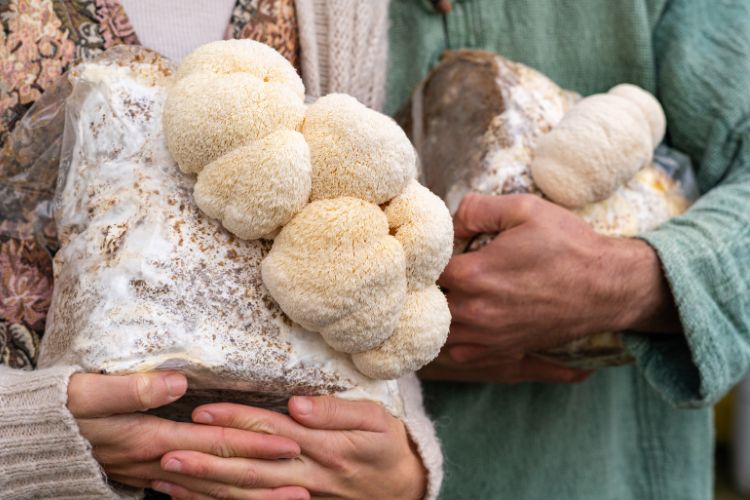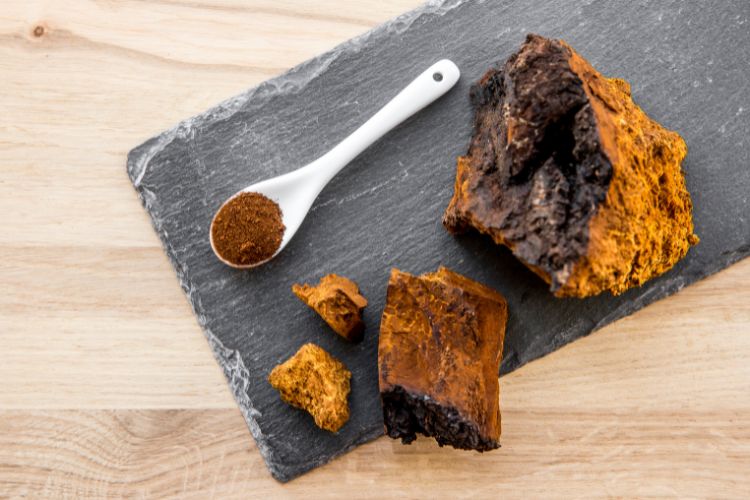Can You Mix Mushroom Coffee With Regular Coffee?
Everybody has that one friend who swears by mushroom coffee. They talk about lion’s mane for focus, reishi for calm, or chaga for its antioxidant properties.
Maybe you’ve tried it, maybe you haven’t, but the thought eventually comes up: Can you mix mushroom coffee with regular coffee?
Many coffee lovers want the caffeine kick and comfort of a regular cup, yet they’re curious about the added nutrients, antioxidants, and health advantages mushrooms bring. Mixing the two feels like a middle ground—less jitters, more balance, and still a drink that tastes like coffee.
If you’ve wondered how Mushroom coffee works, what it tastes like, and whether it’s worth adding to your morning routine, you’re in the right place.
What Exactly Is Mushroom Coffee?
Mushroom coffee isn’t about tossing some button mushrooms into your mug. It’s typically a blend of ground coffee beans and medicinal mushrooms, dried and milled into fine extracts.
The result is a cup that looks and brews like coffee, but carries compounds you won’t find in standard beans. The mushrooms most often used include:
- Lion’s mane (mane mushroom): Linked to focus and attention.
- Chaga: Earthy, packed with antioxidants.
- Reishi: Calming, often connected to stress support.
- Cordyceps: Sometimes used for stamina and energy.
- Turkey tail mushrooms: Known for immune function support.

What sets this style apart from a regular coffee cup is the presence of adaptogens, plant and fungal compounds that may help the body handle everyday stress. Together, the mushrooms and coffee create a blend with a milder flavor and a slightly different caffeine profile.
Some people enjoy the earthy notes, while others reach for it as a way to cut the jitters and still keep their coffee experience close to what they know.
Can You Mix Mushroom Coffee with Regular Coffee?
Yes, you can mix mushroom coffee with regular coffee, and plenty of people already do. The idea is simple: combine the comfort of a regular coffee cup with the unique qualities of mushrooms.
The result can be a drink that’s familiar yet offers new health advantages. Here’s why many mix the two instead of choosing one or the other:
- Balance the caffeine kick: Get energy without the sharp rise and fall that sometimes follows a strong brew.
- Cut the jitters: Medicinal mushrooms can make the blend feel smoother on the body.
- Boost nutrients: Compounds in chaga, reishi, or Lion’s mane mushroom extracts may support immune function and have other health benefits.
- Experiment with flavor: Earthy notes can create a distinctive taste that pairs well with beans.
One note of care: Individuals with digestive discomfort, allergies, or chronic diseases should talk to a healthcare professional before adding mushroom blends to their routine.
Best Ratios for Mixing
Start light. A reliable ratio is ¼ mushroom coffee blend + ¾ regular coffee. This keeps the caffeine kick steady and the flavor familiar. If that works, you can move toward 50/50 depending on your preference.
Pick a total dose that fits your cup size, then split it:
- Pour-over or drip: Start with 1:3, then adjust to 1:2 if you’d like more mushroom flavor.
- French press: Use the same ratios; it highlights the body of the blend.
- Espresso: keep the mushroom portion small, closer to 1:4, so the shot stays balanced.
Simple dial-in method:
- Brew a small cup of mushroom coffee at the 1:3 mix. Pay attention to taste and body.
- Adjust the ratio gradually. Move to 1:2, then 1:1 if you want a stronger mushroom note.
- Keep everything else consistent so you know the difference comes from the blend, not the method.
Extra tips for consistency:
- Match the grind between both coffees for even extraction.
- Fresh beans and clean water matter as much as the split.
- If your maker runs hot, try a slightly coarser grind to keep the flavor smooth.
This approach makes it easy to experiment until you land on the mix that feels right for your cup.

How Does Mixing Affect the Taste?
Mixing mushrooms with coffee beans creates a cup that feels both familiar and slightly different. The distinctive flavor profile leans earthy and mild, often with a touch of bitterness.
When blended with regular beans, the result is a milder flavor that softens sharp edges and rounds out the body of the drink. Many describe it as a delightful combination—less intense than a dark roast alone, but not so subtle that it loses character.
Pairing choices can influence the taste:
- Light roasts balance nicely with lion’s mane, giving a gentle brightness alongside the mushroom’s grounded notes.
- Medium roasts work well with chaga, where the richness of the beans complements the earthy undertone.
- Dark roasts find harmony with reishi, creating depth without overwhelming the cup.
The outcome isn’t about chasing the perfect taste but about shaping the cup to your own preference, one blend at a time.
Simple Recipes to Experiment With
Mixing mushroom coffee with regular beans doesn’t need to be complicated. A few small changes can turn your morning coffee into an innovative beverage that feels familiar yet offers a fresh twist. Here are some simple ideas to try:
- Cold brew recipe: Combine a 1:3 mushroom-to-regular mix with cold water and let it steep overnight in the fridge. The result is a smoother beverage with lower acidity and a gentle finish that works well over ice.
- Spiced cup: Brew your blend as normal, then stir in a touch of cinnamon, cacao, or vanilla. These natural flavors highlight the mushroom base without overwhelming it, creating a warming cup that feels like a treat.
- Mocha-style blend: Add a spoon of cocoa powder while brewing, then top with milk of your choice. The chocolate depth pairs beautifully with the mushroom base, creating a cup that feels indulgent but still balanced.
- Honey-vanilla latte: Start with a mushroom coffee mix brewed strong, then add frothed milk, a drizzle of honey, and a drop of vanilla extract. This combination softens any bitterness while keeping the plain nature of the coffee intact.
Each recipe builds on the plain nature of mushroom coffee without masking it. Experiment slowly, adjust ratios, and find the version that makes your cup both enjoyable and your own.
Who Should Try Mixing and Who Shouldn’t
Mushroom coffee blended with regular beans can be a great fit for some, but not ideal for others. Here’s a quick way to see where you might stand.
A good option for:
- Individuals looking for a milder flavor and fewer jitters.
- People interested in blends that may support immune function alongside the usual caffeine kick.
- Students or athletes who need steady attention and lasting focus without overstimulating the mind.
Best to avoid if:
- You’ve experienced allergic reactions to mushrooms in the past.
- You often deal with digestive discomfort or follow a restricted diet.
- You’re managing chronic diseases that make new food choices tricky. In this case, check with a healthcare professional before experimenting.
The mix isn’t a one-size-fits-all treat, but for many, it offers an easy experiment that adds variety to the daily cup.

Is Mixing Worth It for Your Daily Routine?
Adding mushroom coffee to your regular cup isn’t a requirement—it’s simply another option on the table. For some, mixing makes sense; for others, the classic brew is still king.
Think of it this way:
- Taste preferences matter: If you enjoy earthy notes alongside your usual roast, coffee with mushroom coffee might be a beverage you look forward to. If not, the flavor can feel distracting.
- Health advantages are possible: Antioxidants, adaptogens, and immune support add appeal, especially if you want a smoother drink with less of the crash that sometimes follows a strong roast.
- How your body reacts: Some people find the blend gentler on the stomach, while others may notice a bit of digestive discomfort.
- Cost plays a role: Mushroom blends are often pricier, and not everyone finds the difference worth paying for in their daily routine.
For plenty of coffee drinkers, that’s reason enough to experiment; for others, sticking with what works is just as satisfying.
The Final Scoop
So, can you mix mushroom coffee with regular coffee? The answer is: Yes, most definitely. The two work together easily. But the result depends on how you shape the blend.
Some do it to soften strong roasts, others for added nutrients, and many simply enjoy the change in taste. The real value comes down to preference. You might want less of the jitters, or just a different kind of cup that feels grounded yet familiar.
Experimenting with brewing methods and ratios is the best way to find your balance—whether that’s a gentle 1:3 mix or a bold 50/50 split.
It doesn’t have to replace your daily ritual, but it can add variety and make each brew more interesting. If you’re curious, start small, pay attention to the flavor, and let your own palate decide.


